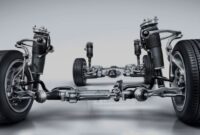Safety First: Advanced Driver-Assistance Systems (ADAS) in Today’s Cars
Introduction
Safety has always been at the forefront of automotive innovation, and in recent years, Advanced Driver-Assistance Systems (ADAS) have become one of the most transformative elements in modern vehicle safety. These technologies leverage sensors, cameras, radar, and artificial intelligence to assist drivers, reduce human error, and ultimately save lives.
From features like automatic emergency braking to lane-keeping assist, ADAS is no longer limited to luxury vehicles—it has become a standard expectation in new models worldwide. As we move toward fully autonomous driving, ADAS represents the critical bridge between manual driving and complete automation.
This article explores the evolution, functionality, components, benefits, challenges, and future of ADAS in detail, helping you understand how these systems are reshaping road safety and mobility.
1. What is ADAS?
1.1 Definition
Advanced Driver-Assistance Systems (ADAS) are electronic systems in vehicles that use advanced technologies to assist drivers in the driving process. These systems aim to:
• Improve driving safety
• Reduce collisions
• Decrease driver fatigue
• Enhance driving comfort
ADAS can either warn the driver of potential hazards or take autonomous corrective actions to avoid or mitigate risks.
1.2 Historical Context
• 1950s–1980s: Basic cruise control and anti-lock braking systems (ABS) were introduced.
• 1990s–2000s: Features like traction control, electronic stability control, and early parking sensors emerged.
• 2010s–Present: Integration of cameras, radar, LiDAR, and AI has enabled fully networked ADAS capabilities.
2. How ADAS Works
2.1 Sensor Suite
ADAS relies on multiple types of sensors:
• Radar: Detects objects at long distances and works well in poor visibility.
• Cameras: Offer visual data for object recognition and lane detection.
• Ultrasonic Sensors: Assist with close-range tasks like parking.
• LiDAR (Light Detection and Ranging): Provides 3D mapping of surroundings (common in higher-end systems).
• Infrared Sensors: Used for night vision and pedestrian detection in the dark.
2.2 Control Units and Processing
Sensor data is processed by Electronic Control Units (ECUs) that analyze conditions in real time. Machine learning and AI algorithms enable:
• Object classification
• Decision-making based on traffic scenarios
• Adaptive behavior (e.g., adjusting speed for curves)
2.3 Actuators
Once a decision is made, actuators take action. These include:
• Brake control modules
• Steering systems
• Throttle controllers
The system can either warn the driver or intervene directly.
3. Key ADAS Features and Functions
3.1 Adaptive Cruise Control (ACC)
Maintains a preset distance from the vehicle in front by adjusting speed automatically. Uses radar and cameras to monitor traffic flow.
3.2 Automatic Emergency Braking (AEB)
Detects imminent collisions and applies brakes to prevent or reduce impact. AEB is often paired with forward-collision warning systems.
3.3 Lane Departure Warning (LDW) and Lane Keeping Assist (LKA)
• LDW alerts the driver when the vehicle drifts out of its lane.
• LKA makes subtle steering corrections to keep the vehicle in lane.
3.4 Blind Spot Detection (BSD)
Warns the driver of vehicles in blind spots using radar sensors, often providing visual or audible cues.
3.5 Rear Cross-Traffic Alert (RCTA)
Helps drivers reverse safely by detecting approaching vehicles from the side, especially in parking lots.
3.6 Traffic Sign Recognition (TSR)
Uses cameras to detect and display road signs (e.g., speed limits, stop signs) on the dashboard or head-up display.
3.7 Driver Monitoring Systems (DMS)
Uses infrared cameras to detect driver drowsiness or distraction and issues alerts or takes preventive actions.
3.8 Parking Assistance and Automated Parking
Guides drivers with visual/audio cues or fully automates the parking process using ultrasonic and camera sensors.
3.9 Forward Collision Warning (FCW)
Warns the driver of an impending crash with the vehicle ahead, providing an opportunity to react before braking is automatically applied.
3.10 Highway Assist / Traffic Jam Assist
Combines ACC and LKA for partially automated driving in highway or slow traffic conditions.
4. Levels of Driving Automation
ADAS forms the foundation of autonomous vehicle development and is categorized into levels defined by SAE International:
• Level 0: No automation
• Level 1: Driver Assistance (e.g., adaptive cruise control)
• Level 2: Partial Automation (e.g., Tesla Autopilot, Ford BlueCruise)
• Level 3: Conditional Automation (driver can disengage under certain conditions)
• Level 4: High Automation (no driver needed in defined scenarios)
• Level 5: Full Automation (no steering wheel required)
Most ADAS systems today operate at Levels 1 and 2.
5. Benefits of ADAS
5.1 Safety
• Significant reduction in road accidents.
• Lower fatality and injury rates.
• Enhanced visibility and awareness in low-visibility conditions.
5.2 Comfort and Convenience
• Reduced driver fatigue on long journeys.
• Assistance in stressful situations like parking or traffic jams.
5.3 Insurance and Cost Savings
• Lower premiums for vehicles with ADAS.
• Reduction in accident-related repair and medical costs.
5.4 Data Collection for Improvement
• Enables manufacturers to gather real-world driving data.
• Supports the development of smarter, safer future systems.
6. Real-World Impact and Statistics
• The National Highway Traffic Safety Administration (NHTSA) reports that AEB can reduce rear-end crashes by 50%.
• IIHS studies show vehicles with blind spot monitoring have 14% fewer lane-change crashes.
• Euro NCAP safety ratings now include ADAS performance as part of their scoring system, influencing consumer decisions.
7. Challenges and Limitations
7.1 Sensor Limitations
• Radar may struggle in extreme weather.
• Cameras are sensitive to lighting conditions (glare, low light).
• Snow or mud can obstruct sensor vision.
7.2 System Misuse and Over-Reliance
• Drivers may overtrust semi-autonomous systems.
• Incidents have occurred due to inattentiveness during ADAS operation.
7.3 Cost and Accessibility
• High-end ADAS features are still limited to mid- to high-priced vehicles.
• Maintenance and repair of these systems can be expensive.
7.4 Legal and Regulatory Issues
• Lack of standardization globally.
• Liability in accidents involving semi-autonomous vehicles is still unclear.
8. Regulations and Safety Standards
Governments and safety agencies are pushing for broader ADAS adoption:
• EU Mandates (2022): Requires AEB, LDW, DMS, and speed limiters in all new vehicles.
• USA (NHTSA): Considering requirements for FCW, AEB, and pedestrian detection.
• UN Regulations: UNECE WP.29 provides harmonized standards for ADAS testing.
These regulations aim to ensure consistency, reliability, and driver education.
9. ADAS in Different Markets
9.1 United States
• Tesla, Ford, and GM lead in ADAS deployment.
• Partial automation features like Autopilot and Super Cruise are gaining popularity.
9.2 Europe
• Strong regulatory backing and consumer awareness.
• Premium brands like BMW, Mercedes-Benz, and Audi offer advanced ADAS packages.
9.3 Asia-Pacific
• Japan and South Korea are pioneers in ADAS innovation.
• China’s rapidly growing EV market is integrating ADAS at scale, led by NIO, BYD, and XPeng.
10. Integration with Electric and Autonomous Vehicles
ADAS systems are particularly important for electric vehicles (EVs) and autonomous cars, which rely heavily on digital systems.
• Many EVs come with over-the-air (OTA) updates, allowing ADAS software upgrades post-purchase.
• ADAS acts as the core of Level 3+ autonomous systems, offering a stepping stone to full automation.
11. Future Trends in ADAS
11.1 AI-Powered ADAS
• Machine learning enables better recognition of objects, weather conditions, and driver behavior.
• Future ADAS could anticipate accidents before they become unavoidable.
11.2 Sensor Fusion
• Combining inputs from radar, LiDAR, cameras, and ultrasonic sensors for holistic environmental understanding.
11.3 Edge Computing and 5G
• Enables faster processing of data locally (edge) for real-time response.
• 5G reduces latency, improving communication between vehicles and infrastructure (V2X).
11.4 Vehicle-to-Everything (V2X)
• Integrates ADAS with smart infrastructure, enabling cars to respond to traffic signals, construction warnings, and pedestrian movements in real time.
11.5 Augmented Reality (AR)
• AR heads-up displays (HUDs) can project ADAS alerts directly onto the windshield for better situational awareness.
12. Educating Drivers and Increasing Adoption
While technology continues to advance, driver understanding remains essential.
• Automakers are investing in in-car tutorials and driver education apps.
• Governments and NGOs are working on public awareness campaigns to encourage safe usage.
Improper use or misunderstanding of ADAS functions can reduce effectiveness and even create new risks.
Conclusion
Advanced Driver-Assistance Systems (ADAS) are revolutionizing road safety and mobility. By supporting drivers with real-time data, alerts, and interventions, ADAS reduces the risk of accidents, enhances comfort, and lays the groundwork for autonomous driving.
As technology matures, ADAS will become more intelligent, accessible, and integrated into our transportation infrastructure. With robust regulation, public education, and responsible innovation, the path ahead promises not just smarter cars—but safer roads for all.
The future of automotive safety is not merely about surviving accidents—it’s about preventing them altogether. And with ADAS at the wheel, that future is rapidly becoming a reality.



